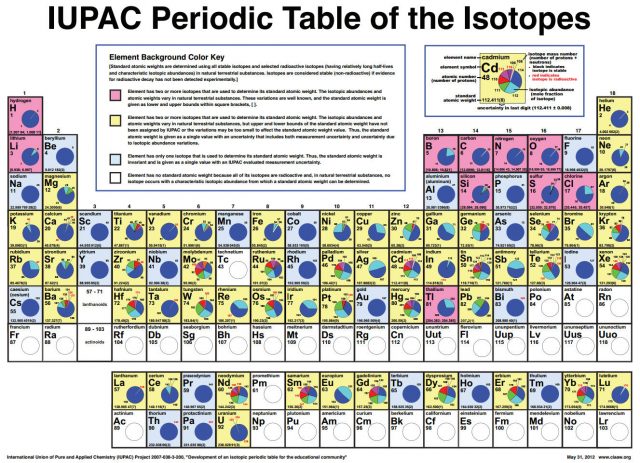MI weekly selection #42
19 elements to have atomic weights adjusted
Aluminum, cadmium, gold and arsenic are among 19 elements that are having their atomic weights adjusted by the International Union of Pure and Applied Chemistry. More precise measurements are now available leading to the new weight calculations, which happens rarely. The atomic weight of nonmetal selenium hasn’t been revised since 1934, for example.
Lone crystal shows signs of interface superconductivity
Researchers have found that an iron-based crystal may have regions that can superconduct at temperatures that are higher than the rest of the crystal. Physicist Paul Chu of the University of Houston reports small regions of an iron-based crystal that generally superconducts at 30 kelvin can superconduct at 49 kelvin, which could be the first time interface superconductivity was detected in a stand-alone and stable crystal.
Children with Down syndrome have leukemia-causing gene mutation
Having mutations in the GATA1 gene can put children with Down syndrome at risk of developing a myeloid proliferation problem called transient abnormal myelopoiesis, Japanese researchers said. They found that children with Down syndrome who developed acute megakaryoblastic leukemia had additional alterations in other possible driver genes, including those in epigenetic and signaling pathways. The findings appear in the journal Nature Genetics.
Audubon’s warblers pick up urge to migrate from interbreeding
Audubon’s warbler, a bird that normally stays put in its western U.S. and Canada habitat, is beginning to migrate, say researchers at the University of British Columbia. The scientists looked at mitochondria in the birds, finding that northern birds were more energy efficient, suggesting that they were interbreeding with the migratory myrtle warbler.
Neandertals, not modern humans, made the first specialized bone tools in Europe
A bone fragment found in France is part of a specialized tool used to smooth tough animal hides. Neandertals made it 50,000 years ago.

1 comment
[…] MI weekly selection #42 | Mapping Ignorance […]